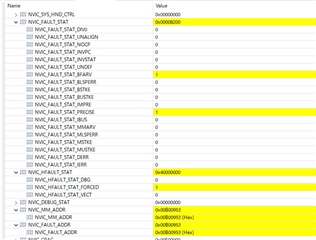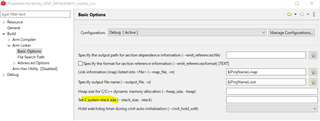Hi,
I would like to know what code was executed before entering Default_handler. Is there a register where the address of the last executed code is stored? If not, I would like to know how to check with CCS.
Here is the sample code I am currently running.
・simplelink_msp432e4_sdk_4_20_00_12\examples\nortos\MSP432E411Y_BGAEVM\demos\outofbox_msp432e411y
Thanks,
Astro




